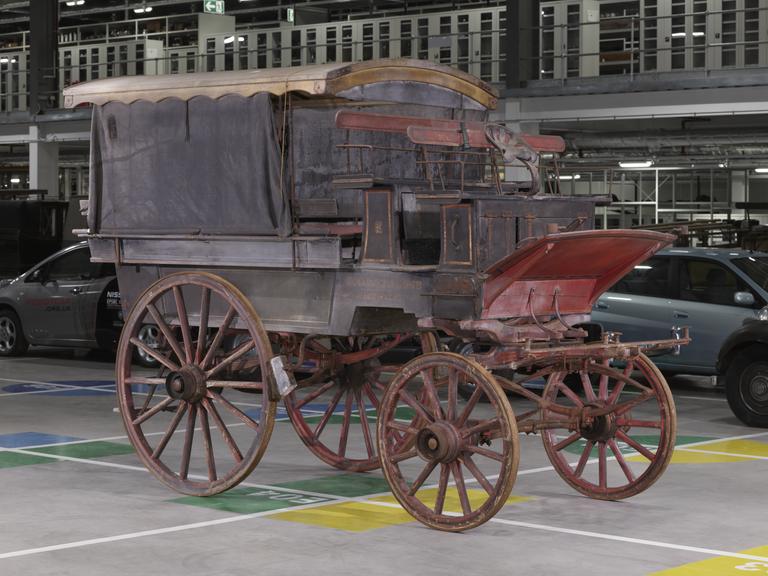
Horse-Drawn Charabanc
- Made:
- 1890

Horse-drawn charabanc with longitudinal seats, c. 1890
Charabancs were horse drawn vehicles used as an early version of a bus or coach, commonly used for sight-seeing and company outings. The name ‘charabanc’ originates from the French phrase ‘char à bancs’ which translates to ‘carriage with benches’. It was also referred to as a wagonette, which is a more accurate term for this vehicle due to the longitudinal seats. They would have been quite an uncomfortable ride – even when they were motor powered in the first world war. The size of the wheels would have made it cumbersome to board. This charabanc was owned by the Briers family in Whitwick, in Leicestershire, England, where it was used by their family business as well as hired out. 'Charabanc’ is still a slang term used today, mostly in Northern England, to refer to sightseeing buses.
Details
- Category:
- Road Transport
- Object Number:
- 1979-703
- Measurements:
-
overall: 2800 mm x 2000 mm x 4120 mm,
- type:
- charabanc
- credit:
- Museum of English Rural Life (Reading University)




